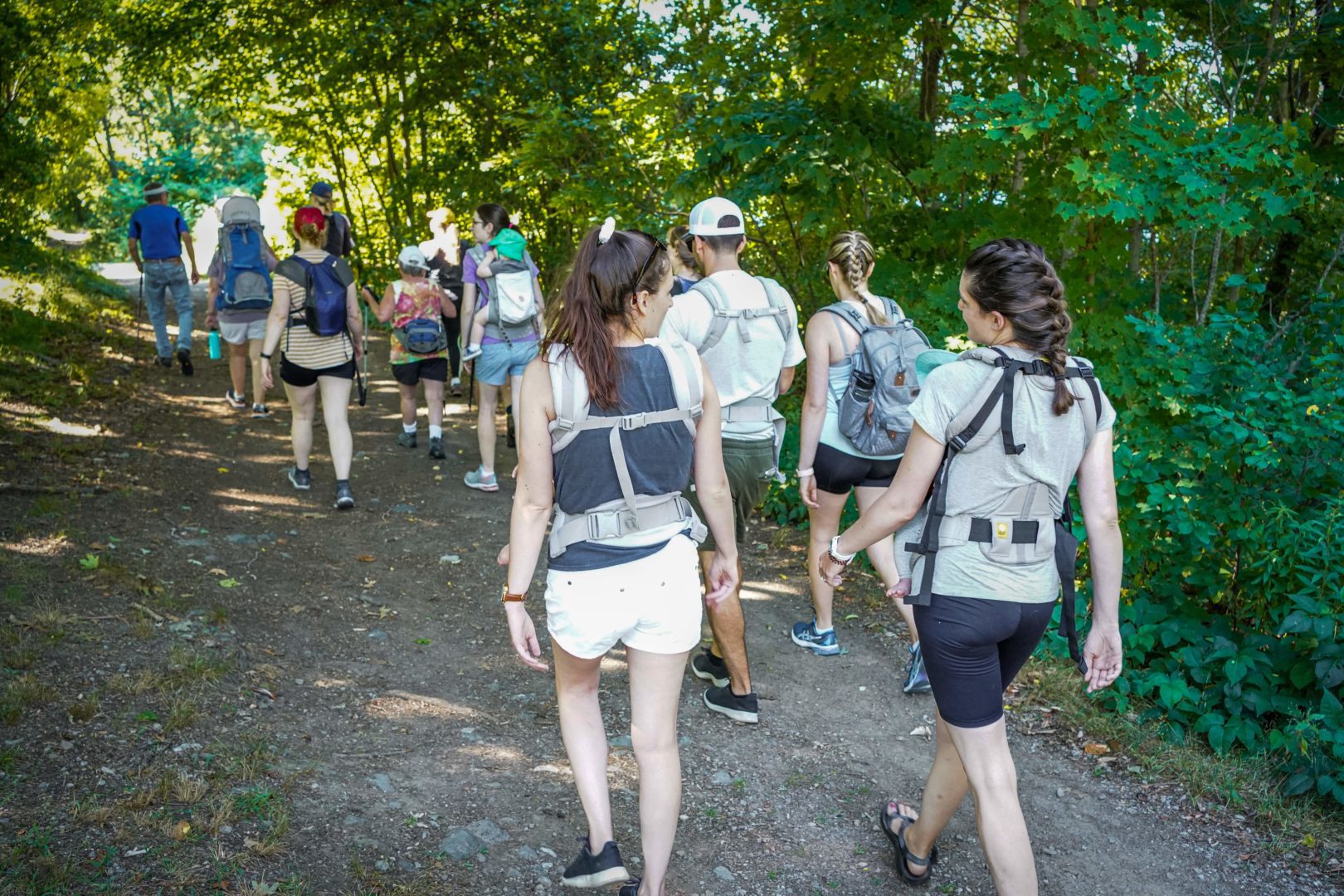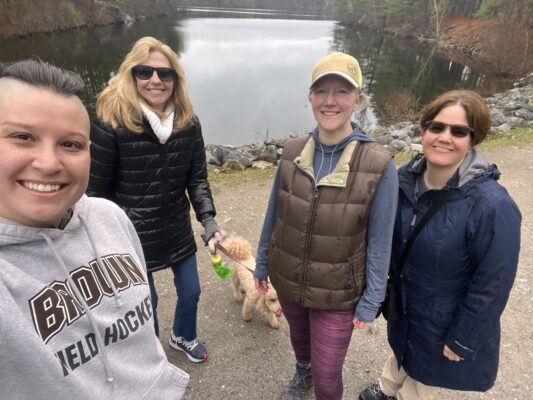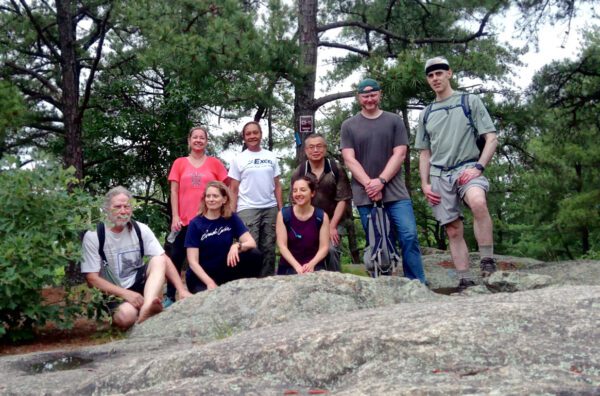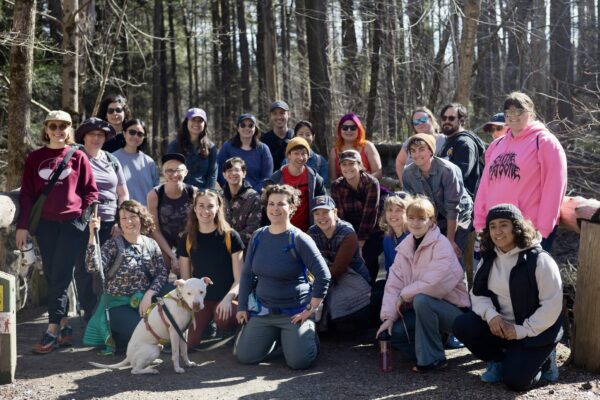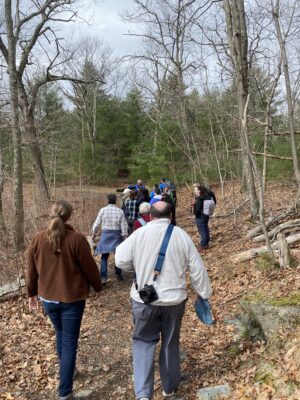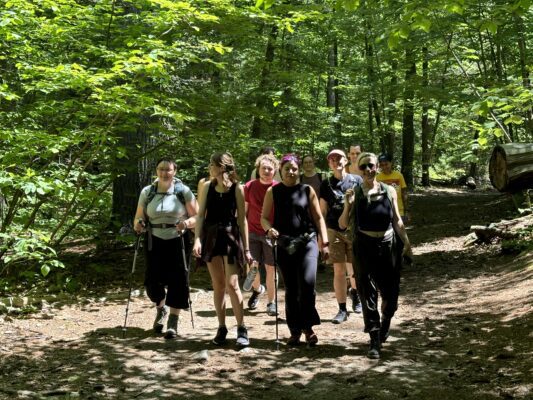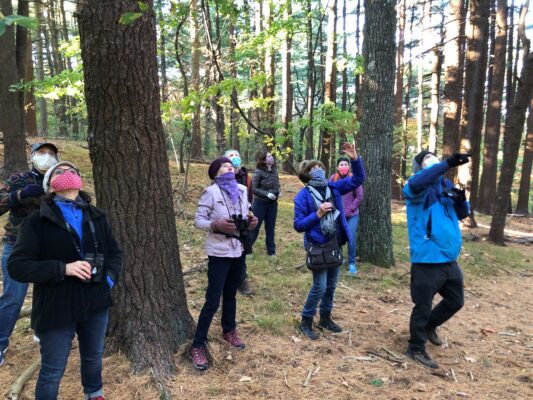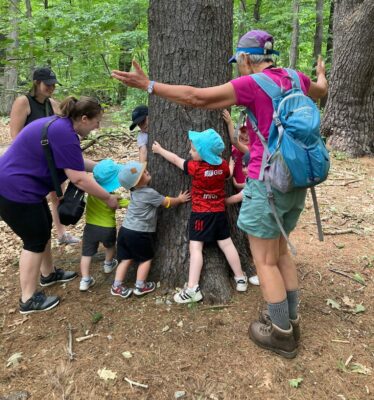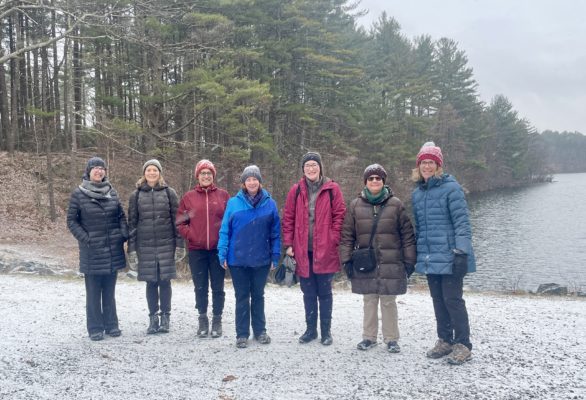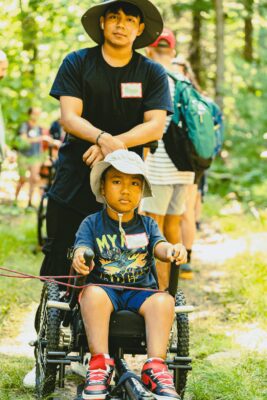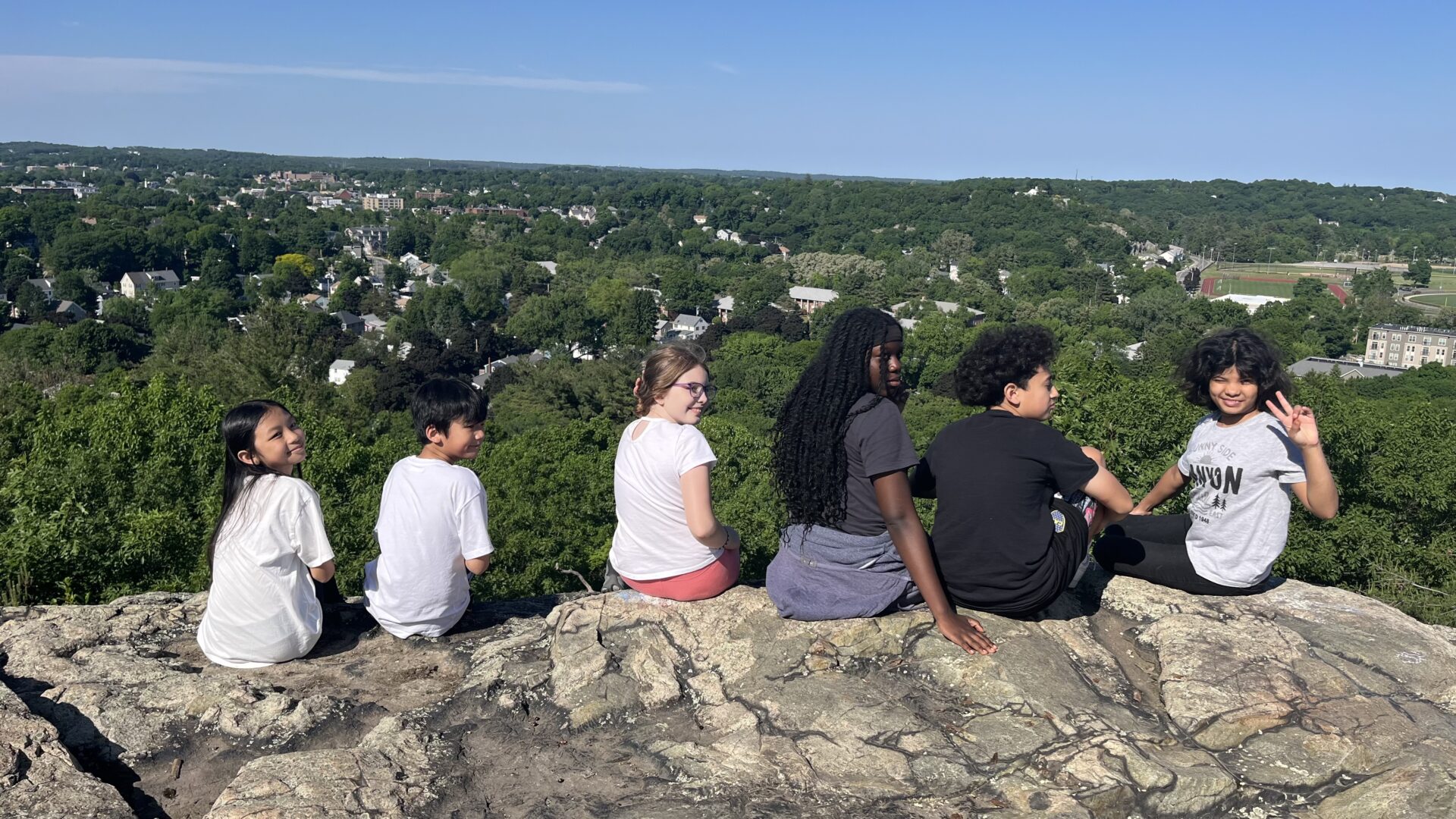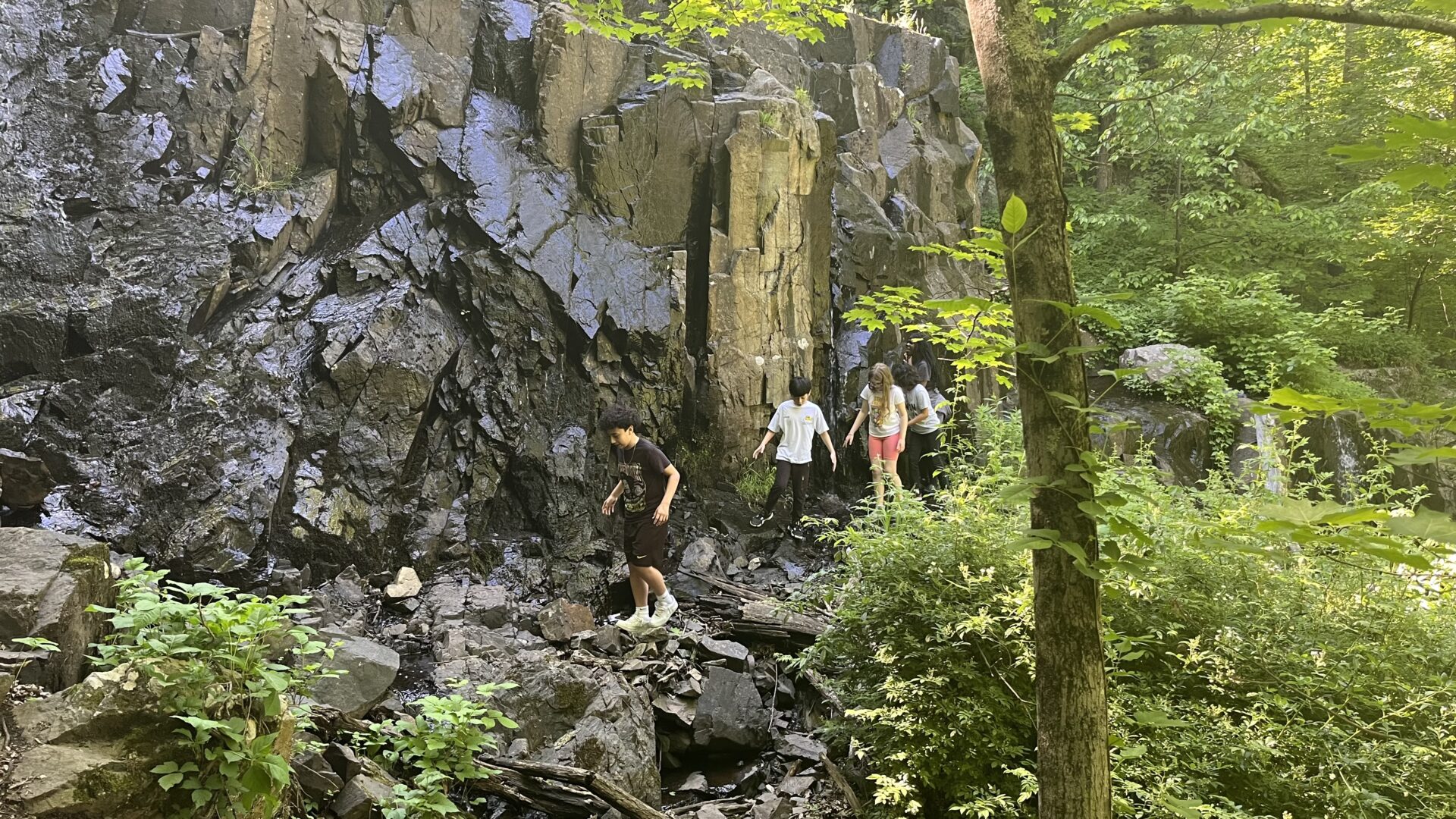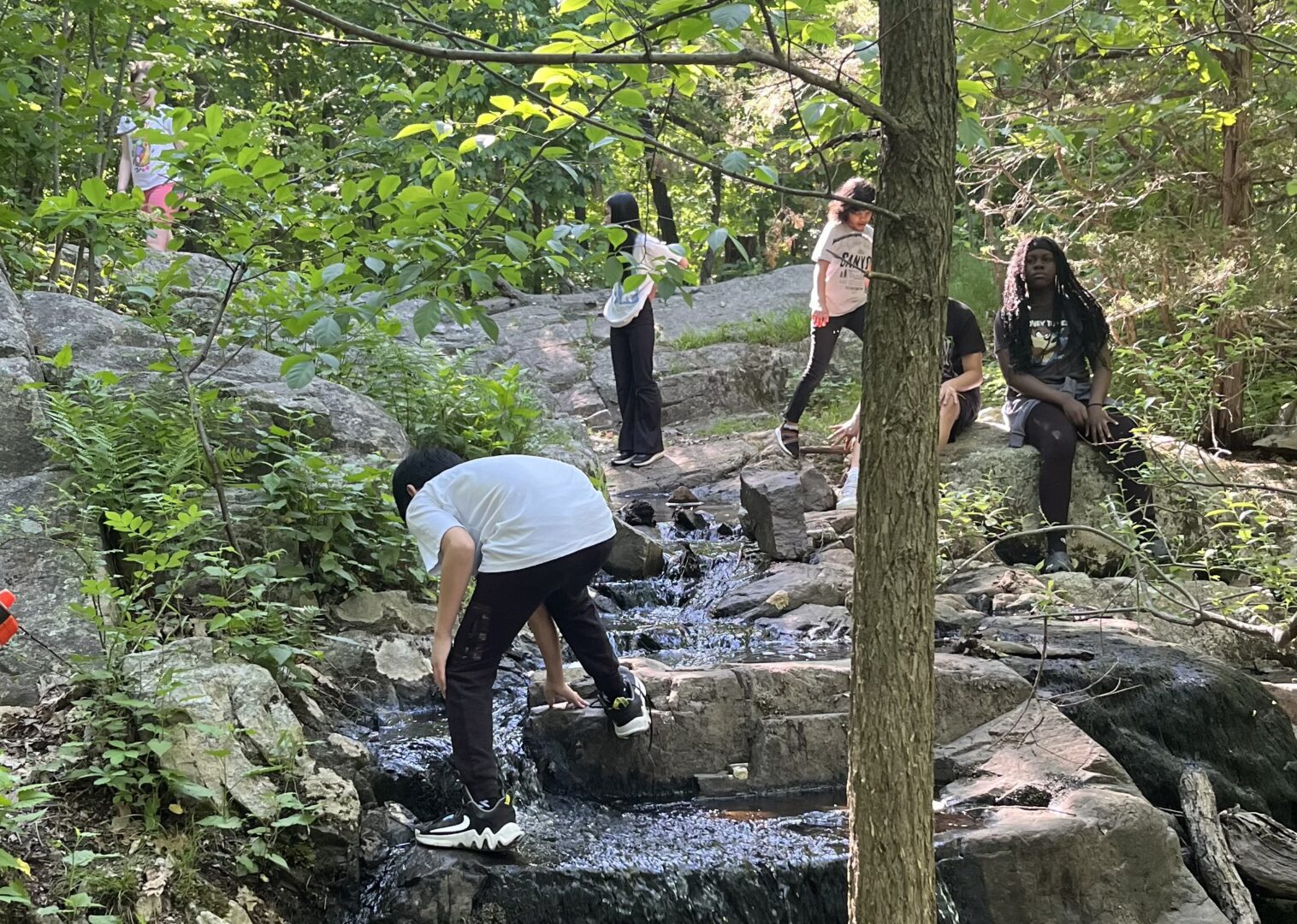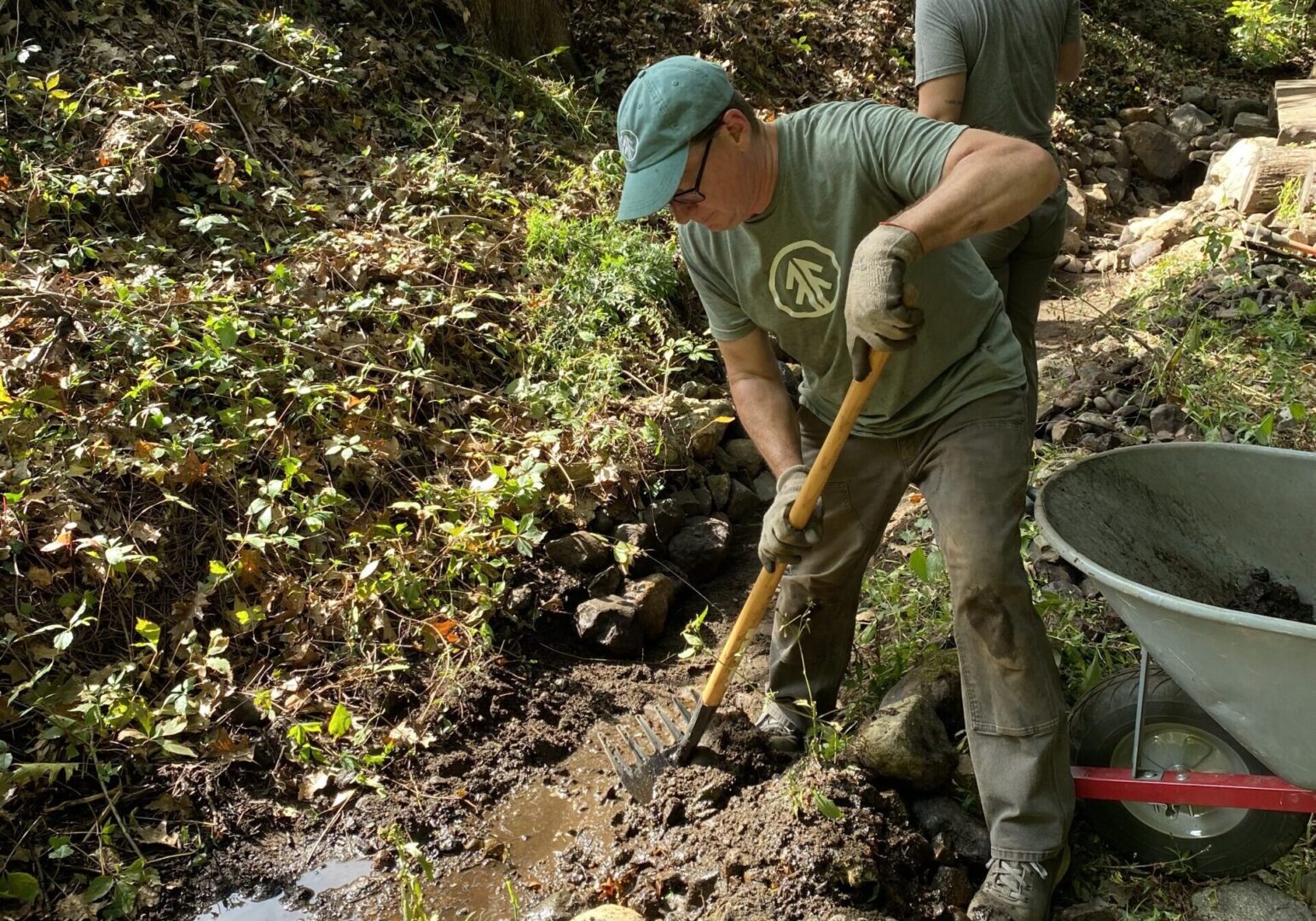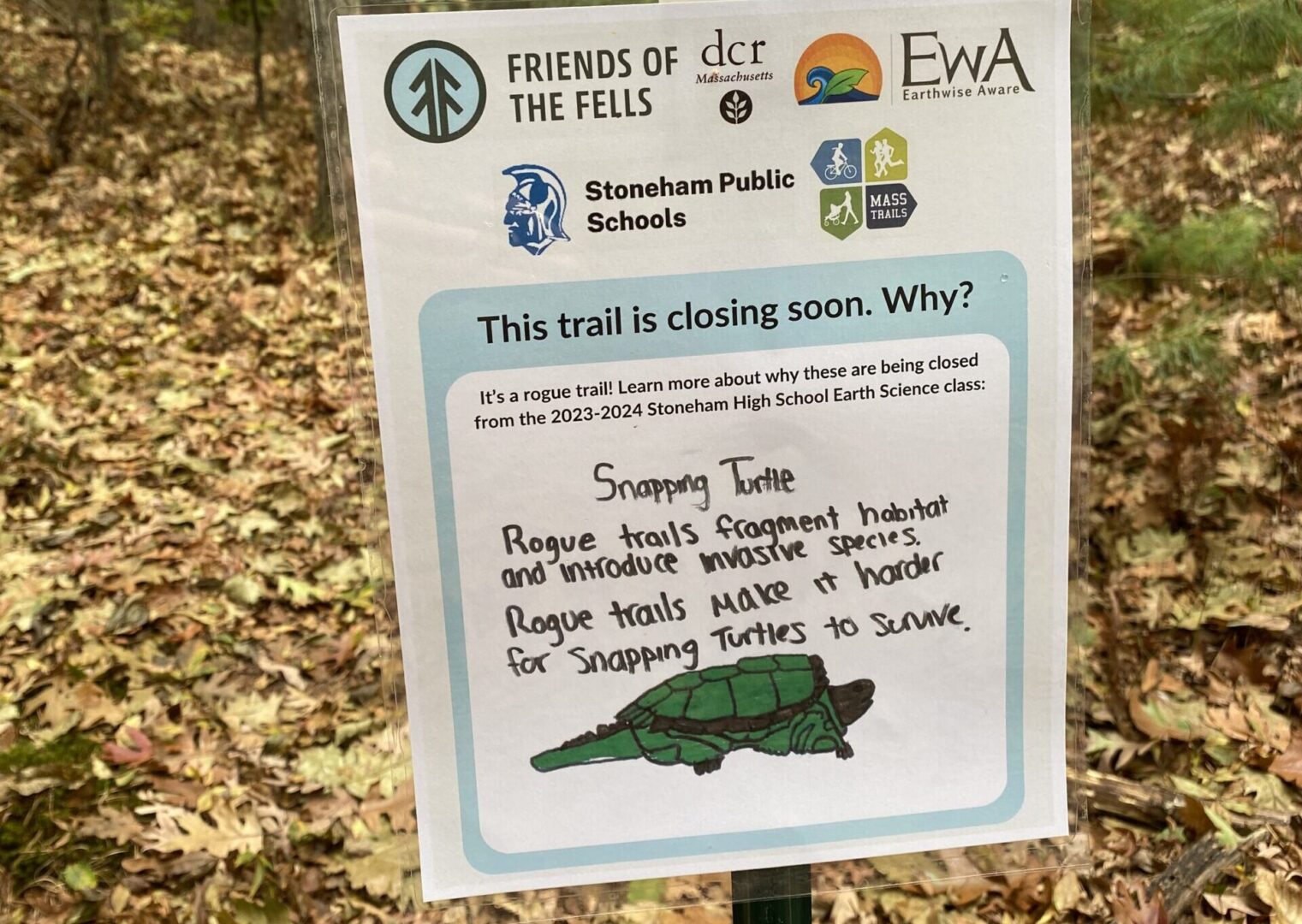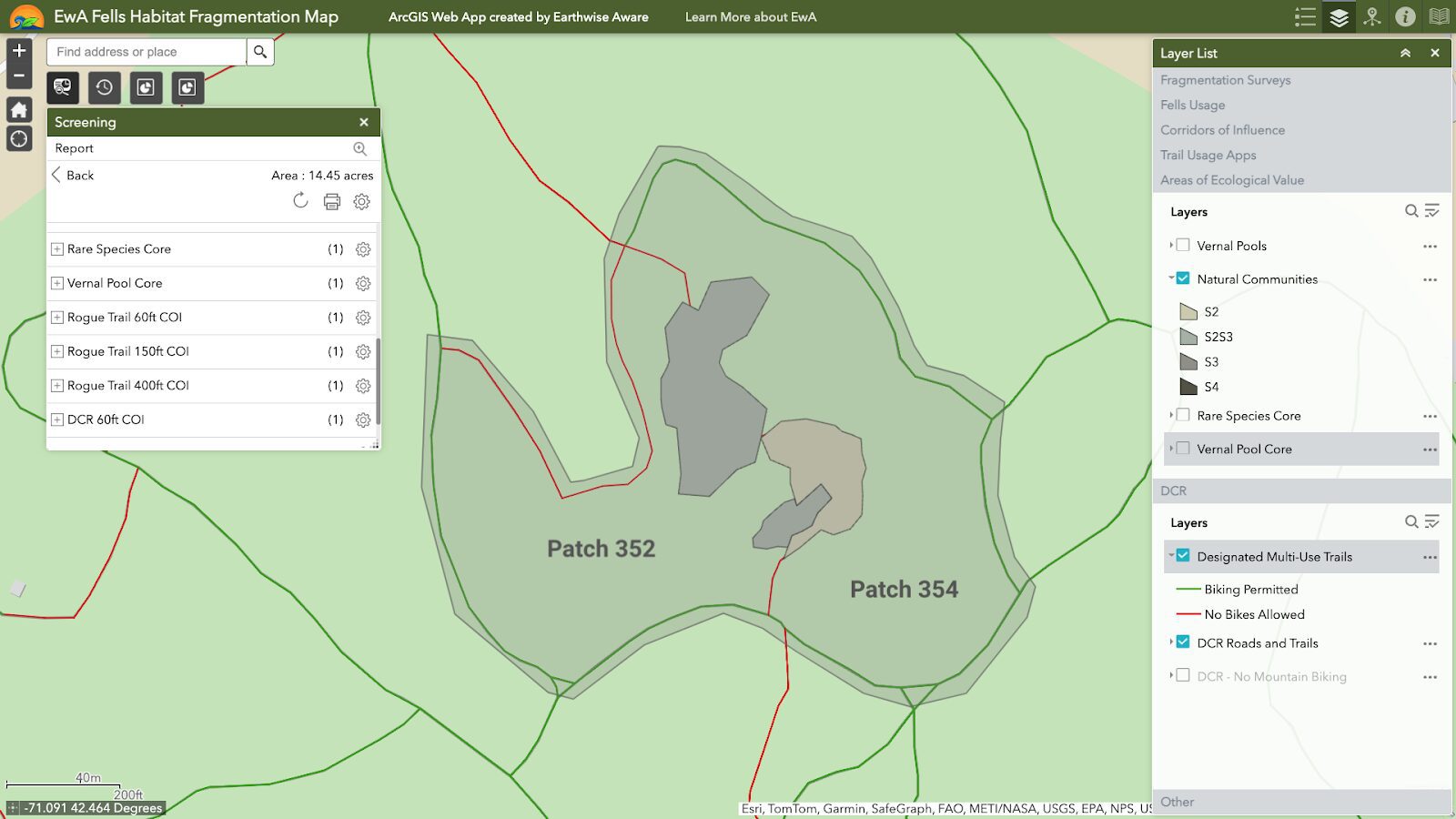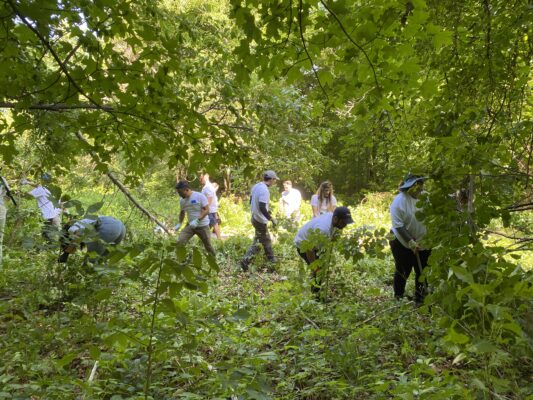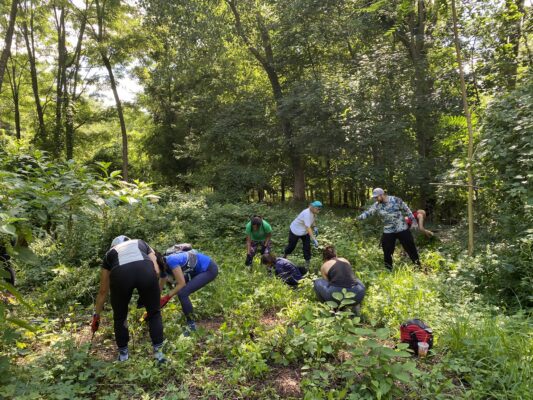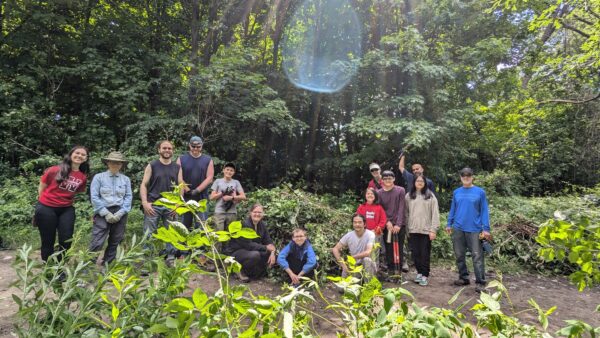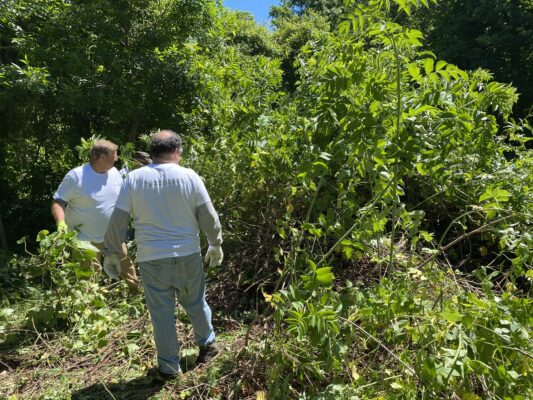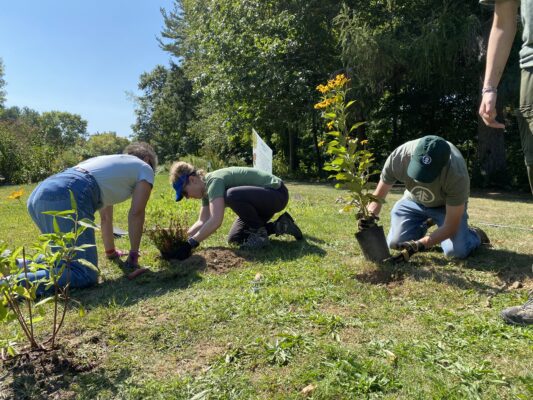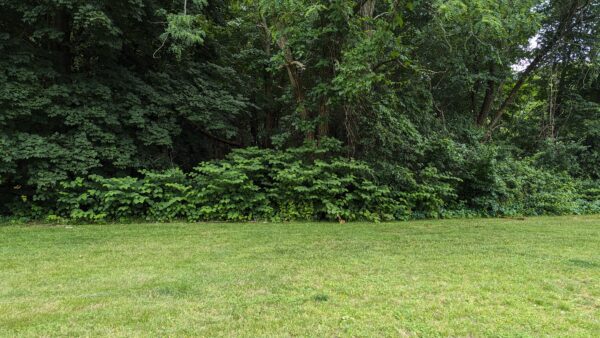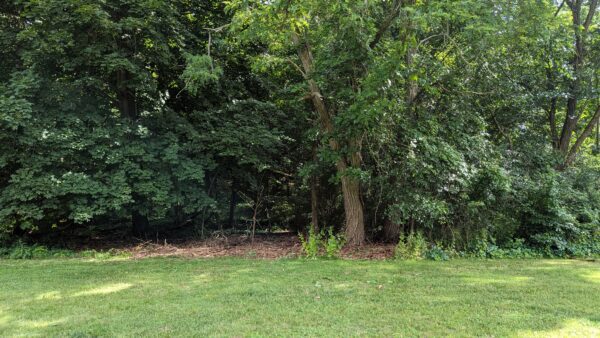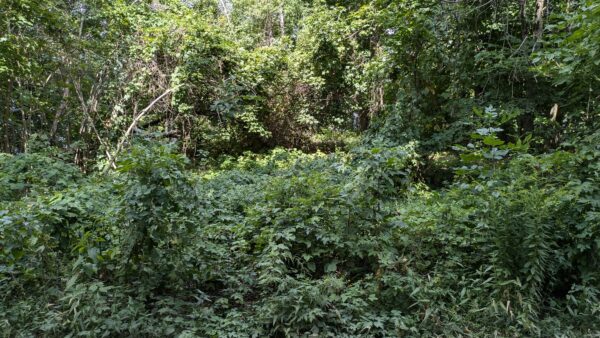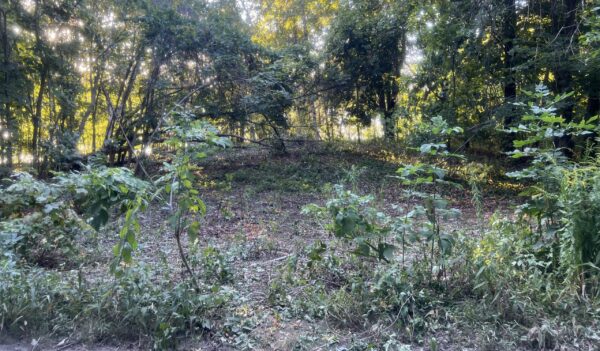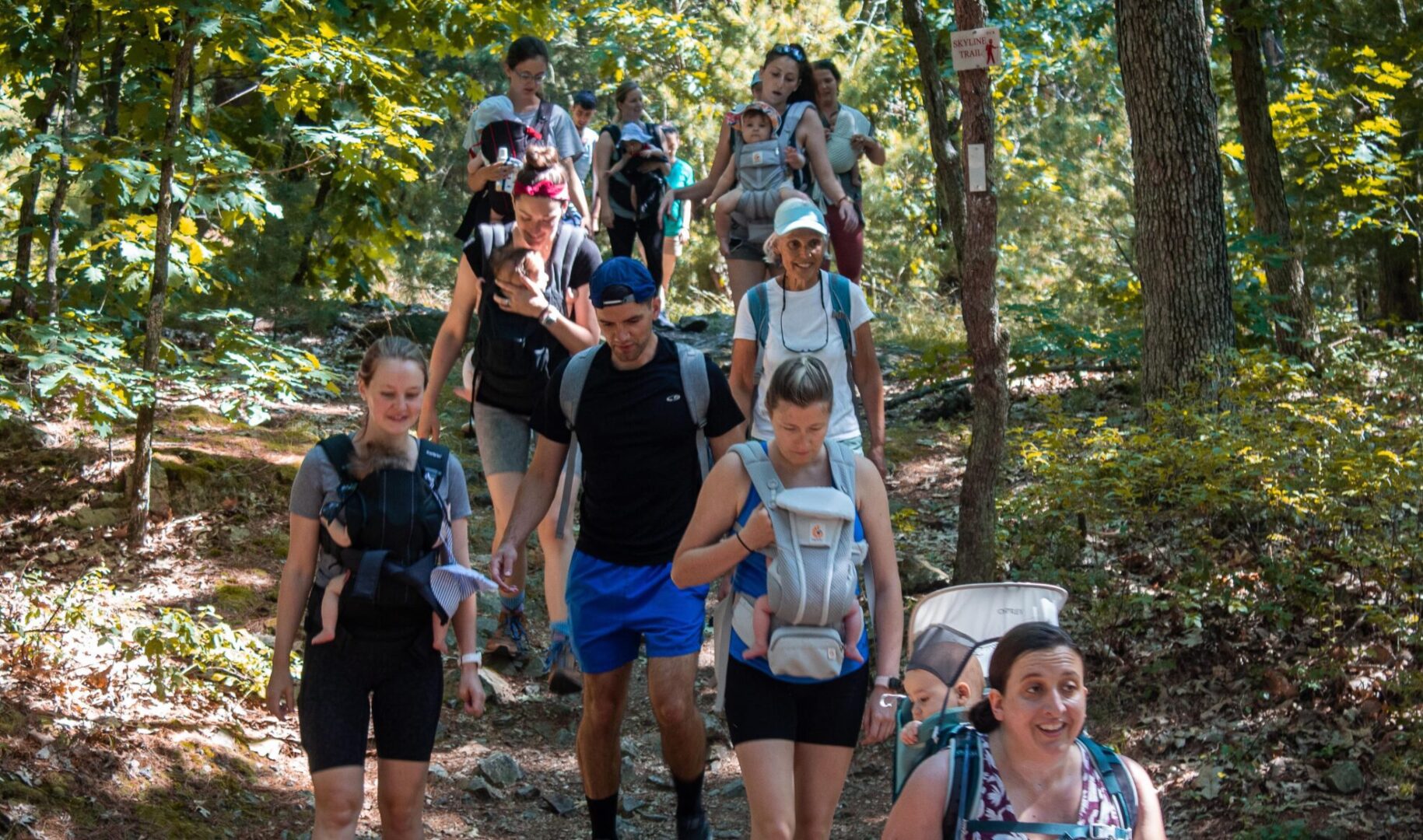
For over twenty-five years, Friends of the Fells has welcomed families to our popular weekday hiking program, Babes in the Woods. Hikes are designed for caregivers who carry their children and are offered every week, all year long, weather permitting. For new parents especially, it’s a great way to connect with others in the same stage of life, and get exercise, all while learning about nature. In the last 12 months, 231 families participated in Babes in the Woods hikes, with many enjoying multiple outings.
The program is very simple. Each week, hikers meet at a different trailhead, and then walk, usually moderately paced, for an hour and a half. This is usually about 2.5 to 3 miles. Hike leaders think about incorporating beautiful views or places of interest; such as the overlook at Long Pond or the Silver Mine near Sheepfold. Participants get a chance to learn about local flora and fauna. Sometimes they get treated to the smell of a sassafras leaf or a snapping turtle sighting in the Middle Reservoir. Deer, frogs, crayfish, snakes, bald eagles, and barred owls are just a few of the animals encountered on the hikes.
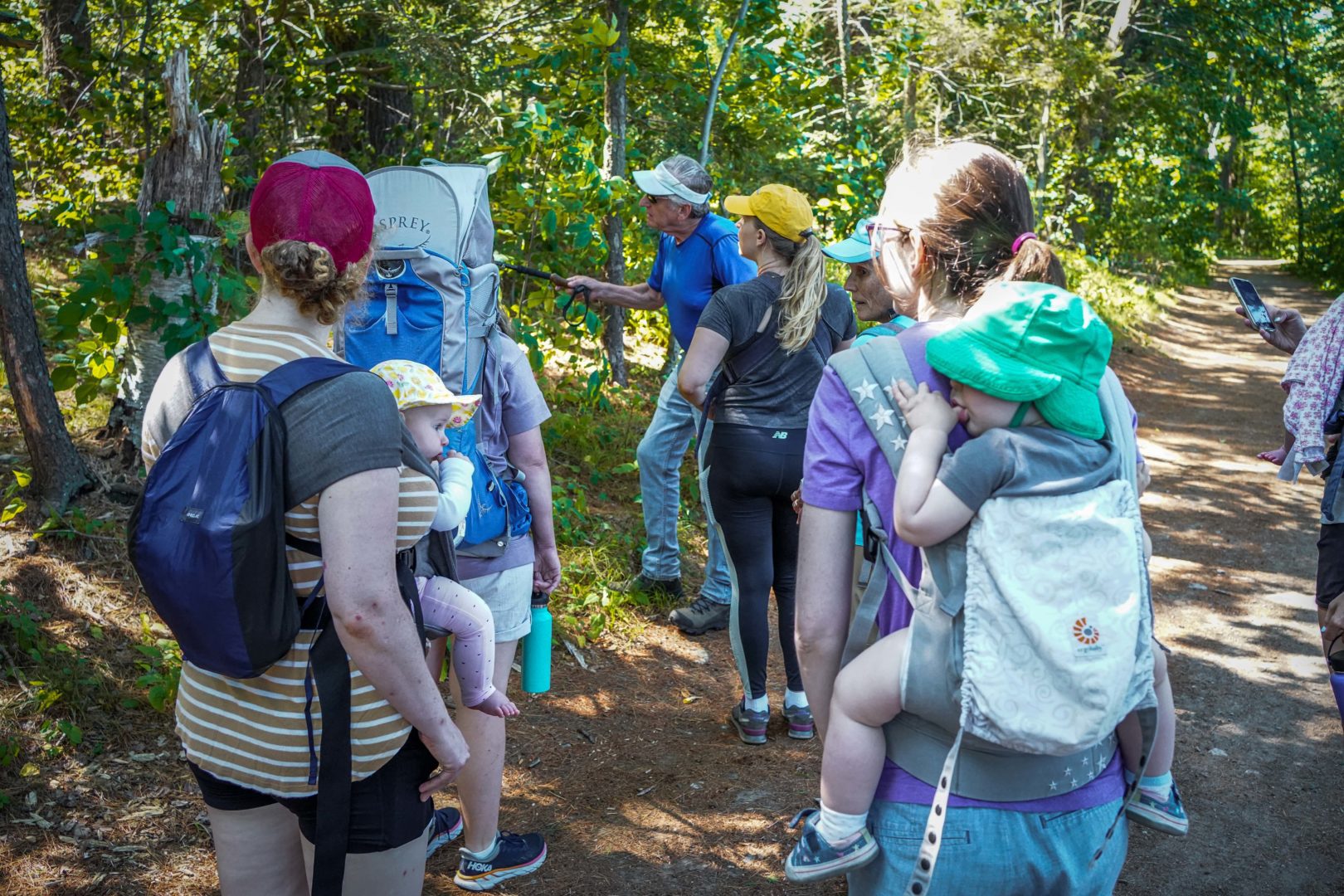
Many studies have shown how helpful nature can be for mental health. Because being a parent is difficult enough already, the Babes in the Woods hikes are offered for free—no one suffering from post-partum depression or anxiety should be denied this opportunity.
The hikes go out in all kinds of weather. Snow and light rain do not stop them, but heavy precipitation or poor air quality will. They are also canceled if the heat index is 90°F or above, or the wind chill is 25°F or below. Some people might be surprised that the hikes go out in below-freezing weather, but babies make fantastic personal space heaters.
There are several volunteers available to help, if someone needs to stop for any reason, such as to tie a shoe, to breastfeed, or to adjust a carrier. Hike leaders and assistants check in with each other frequently to make sure the group stays together. Very rarely, a participant will need to turn around and head back home, and there are extra volunteers to help guide them back for this reason. Leaving home with a new baby for the first time can be very daunting, and this gives people peace of mind when it comes to their precious cargo.
